Singaporean things of the past
 Everyday Singaporean things
Everyday Singaporean things
Image adapted from: Raymond Soh & Medical News Today
The 50s were a much simpler, laid-back time. Ask your grandparents about their youth and they would lament about cheaper everything, while reminiscing of times running young, wild and free with their friends and neighbours.
Singapore has changed a lot since then and many of these practices, objects and occurrences aren’t around anymore. From policemen wearing shorts to doing your business in metal buckets, here are 10 common yet unusual Singaporean things and historical happenings for a blast from the past.
1. Policemen used to rock shorts on duty

Image credit: Paul Joseph Rio Daza
You may recognise the Singlish phrase “Policemen used to wear shorts” being used to emphasise something that happened a long time ago. However, back in the day, policemen really did wear shorts as part of their uniform.
Before the sleek navy uniform donned by police officers today, their attire consisted of a romper-like shirt-and-shorts combo. Pretty chic, if we do say so ourselves. The main benefit of wearing shorts was to allow whatever breeze there was in Singapore’s hot and humid weather to cool the officers down. No doubt a godsend whenever they’re patrolling the streets or sprinting after a wanted criminal.
2. Burning the midnight oil was a literal Singaporean thing
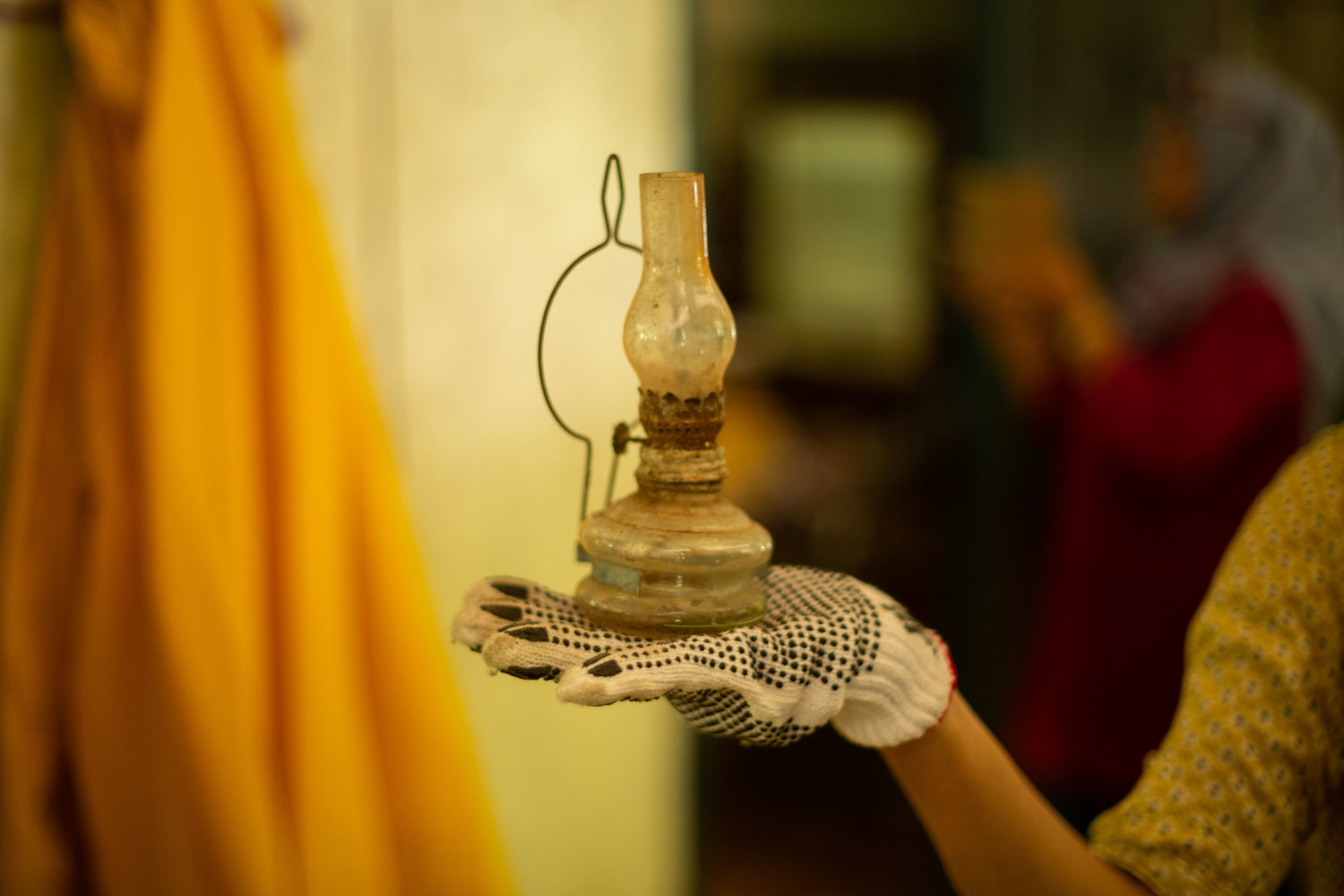
Image credit: Andrew Campbell Nelson
These days, if we have to stay up to rush our assignments, all we have to do is flick a switch and not worry if the lights would go out before we are done. But in the age before stable and reliable electricity, to push a button and get instant, sustained light would almost be considered a touch of magic.
Back then, kerosene lamps of different sizes were used to illuminate homes at night. Longer-lasting kerosene lamps were preferred over candles as the latter could easily be extinguished by wind.
We don’t even want to imagine what a high-risk source of anxiety messing around with candles was like. Just imagine nodding off and accidentally torching your entire home in one fell swoop just because you knocked over a candlestick – big yikes.
3. Human poop was carried away by trucks every night
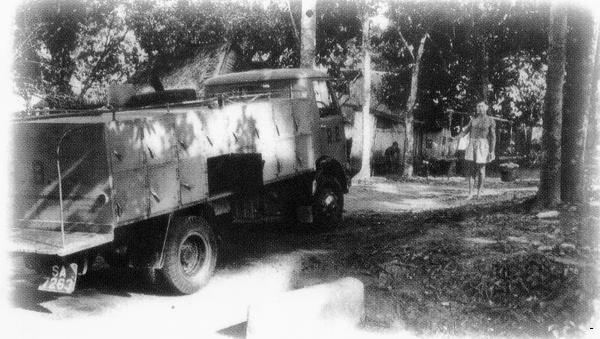
Image credit: Singapore Memory
Before we had a reliable sewage system in Singapore, there were night soil carriers who would come in the dark of the night to collect and dispose of human waste, a.k.a. night soil. It was a crappy job, but a very important one back then.
Up till 1987, toilets were essentially metal buckets which everyone did their business in and were usually shared by a whole building or kampung. Because of the putrid smell, many people would smoke to mask the stench as they used the toilet.
Parents would warn children not to go to the toilet late at night because the night soil collectors would collect the buckets even if you were only halfway through your business! The buckets of waste would then be carried to plantations to be sold as fertiliser, or loaded onto a massive 32-door wagon where it would be disposed of at night soil stations.
Certainly makes us appreciate the private sanctuary of modern toilets we’re all so used to today – true porcelain thrones fit for kings and queens.
4. Poor hygiene meant tapeworms randomly wriggling out of bodies

Image credit: Medical News Today
While we’re on the topic of poor hygiene conditions, Singapore’s public health also suffered in the 50s all the way till the 60s due to congested living spaces. It was the norm then for 5 to 6 families to be squeezed into the same small quarters. Remember the shared common toilet? Consider it a breeding ground for bacteria that was just teeming with nasties.
Outbreaks of diseases like typhoid fever and tapeworm contraction were also frequent, due to poor hygiene when handling food or water. Because tapeworms don’t usually cause any outward symptoms, it must have been quite frightening to not realise you had these creatures living inside you…until they crawled out of your bottom or even out of your nose or ears. *Shudder*
Luckily for us, cases of tapeworm infestations are rarely heard of in this day and age and even then, we have the magic of modern medicine to get rid of those creepy buggers.
5. Death houses existed for terminally ill people to spend final days

Image credit: Yip Cheong-Fun
Street of the Dead – this ominous-sounding street name was used to refer to the infamous Sago Lane in Chinatown, where death was part of everyday life. Known for their “death houses”, these designated spaces were where the terminally ill went to await their demise.
This was a common Singaporean thing among Chinese immigrants who had no kin or those who didn’t want to burden their loved ones. The death houses would usually be inhabited by patients in the upper floors, while the ground floor would provide funeral services. This was also a way for the dying to get a proper send-off when their time came.
Despite the constant reminder of death, the area was bustling with children playing in the streets and tourists visiting the area on rickshaws. A stark contrast between life and death, joy and misery. But it goes to show that the people of this era really practised the “making the most out of what you have” mentality.
Thankfully, death houses were banned by the government by 1961 due to their unsanitary conditions and the possible spread of diseases.
6. Schools served milk in cute little triangles as kids were too skinny

Image credit: F&N Magnolia
Sneak a peek on Carousell or visit local designer stores today and high chances are that you’ll find Magnolia’s adorable triangle milk cartons reimagined in the form of wallets, plushies or pins.
But back in the day, our parents and grandparents could enjoy milk straight out of the fun pyramid tetra packs. The aesthetic is almost a #throwback to those little triangular cloth bags people played Five Stones with, only filled with delicious milk instead of tiny beans.
Throwing it back to 1936, milk was given to students in schools to “fatten them up” and provide essential nutrients like calcium for healthy growth. Students could buy milk at a cheap price at school while undernourished children and those from needy families continued to receive the milk for free.
7. Baby-making boomed and led to huge families with up to 10 kids

Image credit: National Archives of Singapore
It was a common belief back then that having loads of children was like a “long-term investment” – parents would toil and provide for their children for a greater guarantee that they would receive a lavish life in the future. This mindset was extremely common amongst folks who wanted more children to help earn money for the family. Also, population growth was at an all-time high because people had little access to and knowledge about family planning.
Afraid of overpopulation and its implications on the economy, the government rolled out the “Stop At Two” campaign – which encouraged couples to have a small family while legalising abortion and encouraging voluntary sterilisation.
8. Streaming parties existed before Netflix was a thing
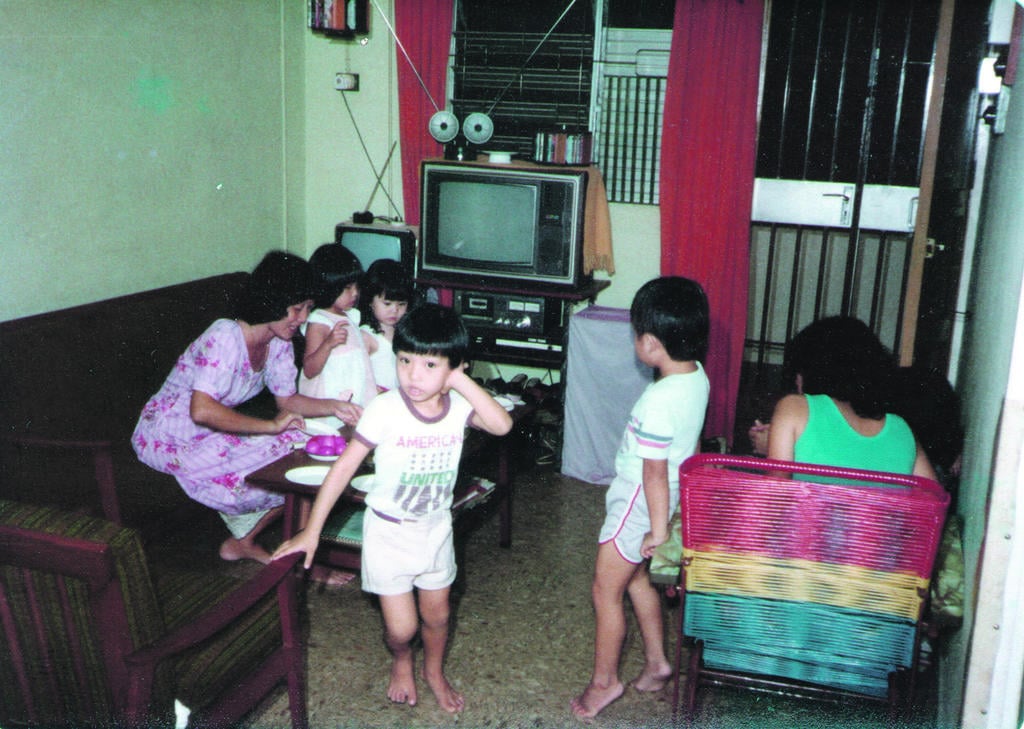
Image credit: Raymond Soh
Before the era of Netflix and Youtube, people would have screening parties at coffee shops, community centres or even at neighbours’ homes. It wasn’t common back then for every household to have a TV. So when a popular show came on that everyone wanted to watch, families with a television would have an open-door policy, letting people come in and out of their homes freely.
Sadly, this practice isn’t a typical Singaporean thing anymore but you can still host a binge-watch sesh at home and invite your neighbours to keep the kampung spirit alive.
9. Chinese opera singers were the K-Pop idols of your Ah Ma’s era
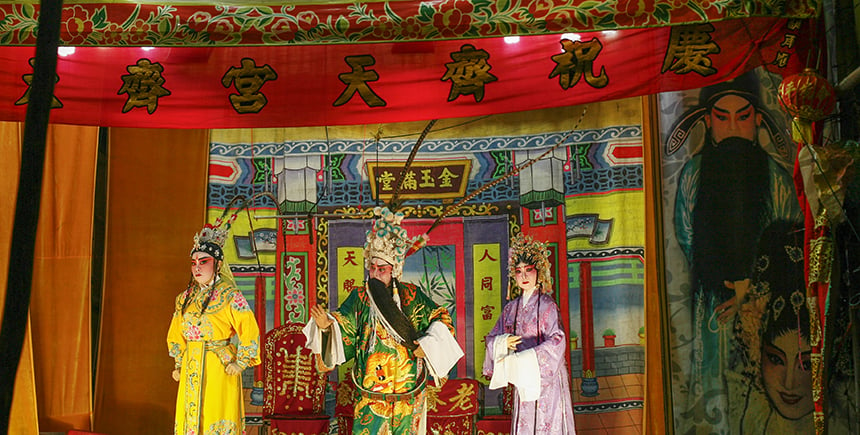
Image credit: Smile Magazine – Cebu Pacific
Wayang, which refers to Chinese street opera, was a common form of entertainment for our grandparents’ generation. You’ve probably caught a glimpse of it while surfing local TV channels, but this was on the same level as today’s most rockin’ concert or addictive K-drama series.
Performers would be decked out in elaborate make-up and costume while performing with a live band at open spaces or within temples. These performances were common during deities’ birthdays and occasions like the Hungry Ghost Festival or Chinese New Year, drawing the attention of large groups of people who would come to watch.
It got so popular at one point that authorities tried to restrict performances in a bid to control the insane crowds, an attempt that was met with much resistance and retaliation from the public. Sadly, it is now a dying art form with a dwindling audience and is only allowed at designated sites.
10. Hawkers roamed Singapore streets with mobile carts before Grabfood
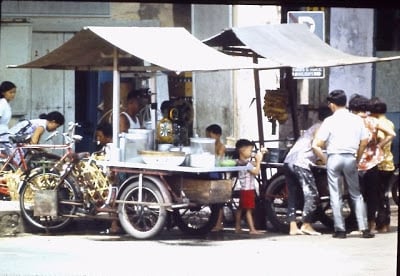
Image credit: Epoch Times
Up till 1971, there weren’t hawker centres in Singapore, which is hard to imagine considering we can hop out of our HDBs or exit any MRT station now to dabao from neighbourhood kopitiams. Back in the day, hawkers peddled food, drinks, vegetables, poultry and sundries as a fuss-free and low-cost way of supporting their families.
Because of how mobile they were, hawkers could go where the crowd was and would push their carts or carry goods on their backs through established routes in neighbourhoods, alerting residents to their presence with hearty hollers or the jangling of bells. They would also often set up shop near wayang performances due to the large crowds they drew.
Street hawkers were an important part of the community as they provided convenient and affordable meals to the working-class of Singapore. Eventually, they were resettled into properly established hawker centres in a bid to address poor sanitation and obstruction of traffic. And thus began the golden age of hawker centres flourishing all throughout the nation!
See Wayang and other Singaporean things in a new local drama series
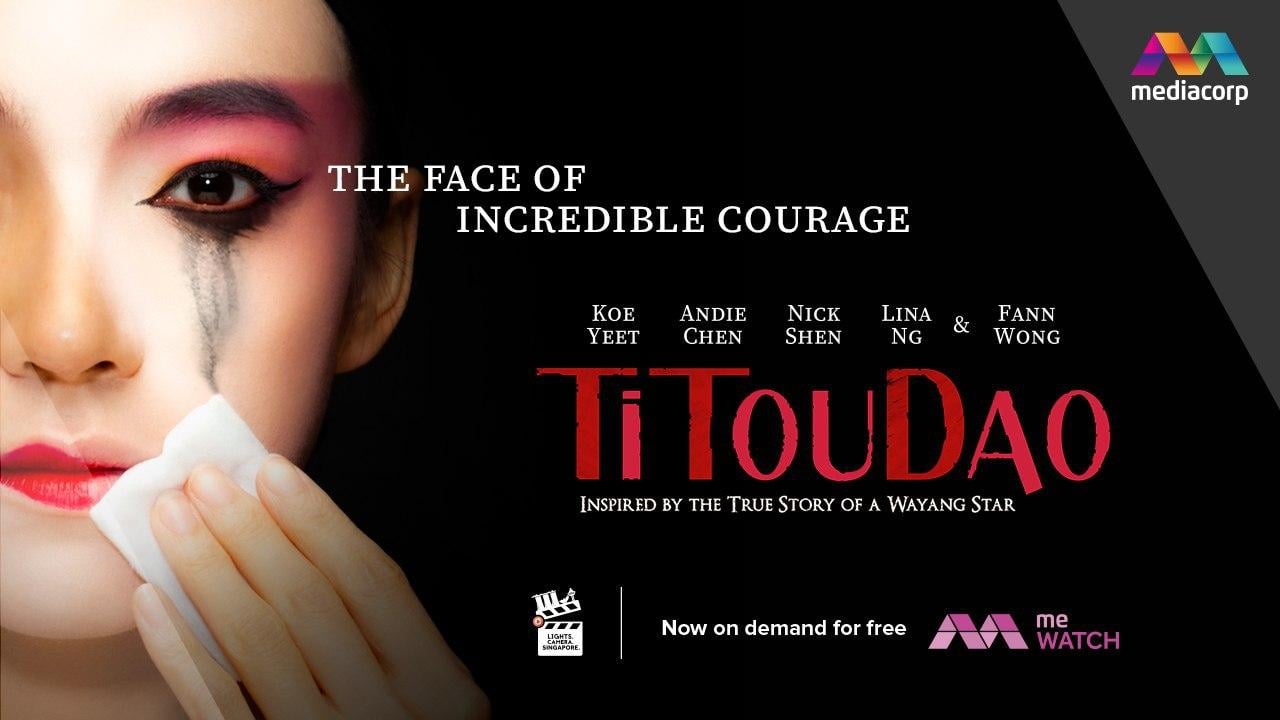
Image credit: Mediacorp
Catch a rare glimpse of some of these everyday Singaporean things of yesteryears in Mediacorp’s English-language drama series “Titoudao: Inspired by the True Story of a Wayang Star“, from the roving hawker carts in action to…tapeworms emerging from one’s nose. *Gulp*
The show delves into the art of wayang – the entertainment of choice back in the day, and follows the story of Ah Chaim, a respected wayang performer in the 1940s.
An adaptation of the local play by Goh Boon Teck, the drama shows how his real-life mother, Ah Chiam, went through multiple trials and tribulations to become one of the most famous wayang performers in Singapore.
Catch your favourite local actors – Fann Wong, Andie Chen, Constance Lau, Tosh Zhang, Joel Choo and Tasha Low, among many others – as they bring to life the enthralling world of wayang. Don’t miss the series every Tuesday at 9.30PM on Channel 5 or on MeWATCH, Mediacorp’s video streaming destination formerly known as Toggle.
Find out more and watch Titoudao here
This post was brought to you by Mediacorp.